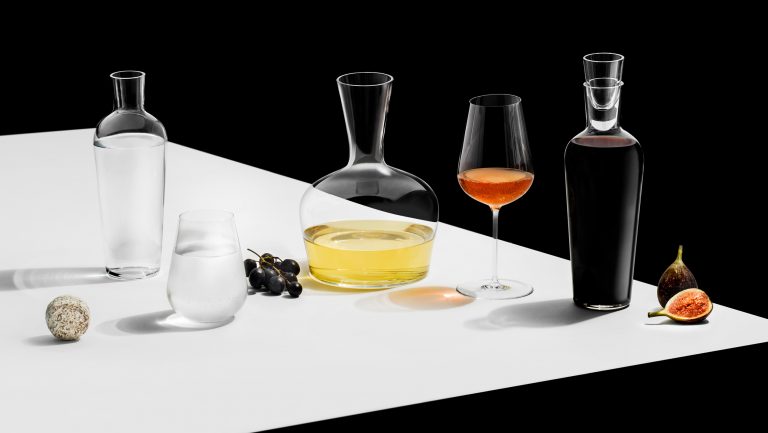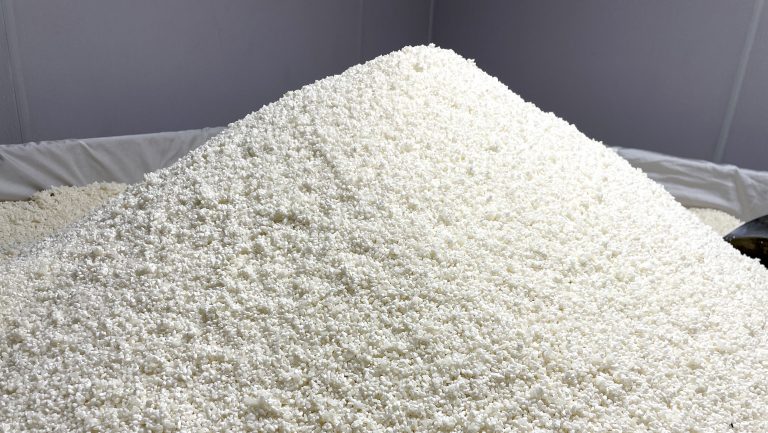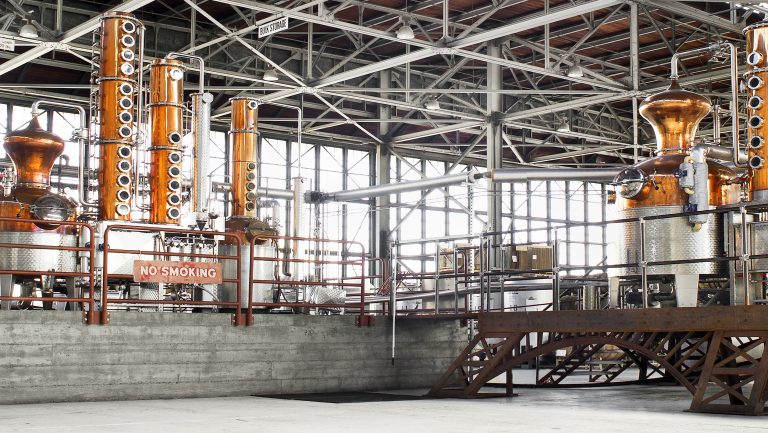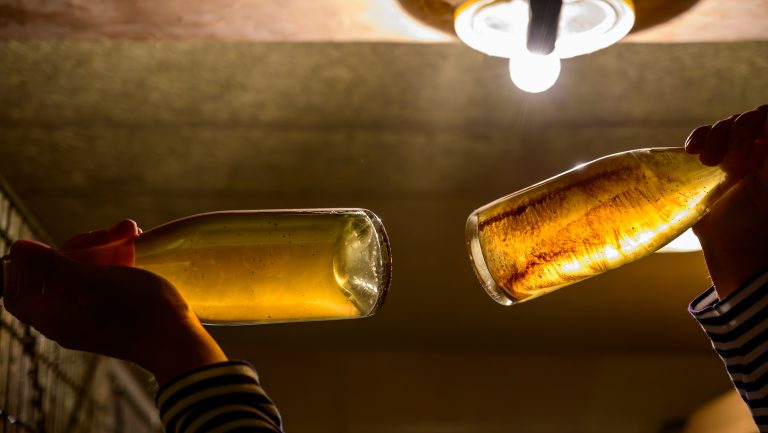In 1958 the Austrian glassmaker Claus Josef Riedel added a new wineglass to his catalog. With a large bowl and a gently flared lip, the Burgundy Grand Cru was specifically intended to hold Burgundy wines. At that time, a glass made for a particular wine was a first. According to Maximilian Riedel, a grandson of Claus and the current CEO of Riedel, until then nobody else had recognized that the “taste, bouquet, balance, and finish of a wine [could be] affected by the shape of a glass.” His grandfather, he says, “took notice [whenever] a slight change in his glassware made a change in what he was drinking.”
The Burgundy Grand Cru was followed by a line of 10 more wine-specific shapes: Alsace, Bordeaux Grand Cru, Chardonnay, Hermitage, Loire, Montrachet, Riesling Grand Cru, Rosé, Sauternes, and Zinfandel. Today, Riedel makes dozens of specialized glasses; the company’s 2018 catalog specifies which of dozens of shapes are appropriate for some 200 different wines, which include familiar grapes like Malbec and Sauvignon Blanc (in oaked and unoaked expressions); less familiar grapes, such as Bacchus and Zierfandler; appellations, like Hermitage; and styles, like rosé.
Embracing Different Shapes and Sizes
The idea that particular shapes are appropriate for particular wines has become so accepted that other makers of high-end glassware, such as Zalto and Gabriel-Glas, now differentiate themselves by explicitly offering “universal” glasses—wineglasses that are suited for drinking any kind of wine.

Don’t miss the latest drinks industry news and insights. Sign up for our award-winning newsletters and get insider intel, resources, and trends delivered to your inbox every week.
At Eleven Madison Park in New York, the assistant wine director, Andrew Rastello, pours from a 200-page wine list into 17 different Riedel shapes. “For a customer to have a different glass for red Burgundy, versus Napa Cab, versus Bordeaux—it’s a luxury,” he says, “but I believe it makes a drastic difference to the experience of the wine.”
Scientific research into the effects of wineglass shapes has provided somewhat equivocal support for the aficionados’ position. In 2001 the Journal of Wine Research published a study in which blindfolded enology students sniffed wines in different glasses, including Riedel Burgundy and Chardonnay glasses. The study’s author found that any wine served in the Burgundy glass was said to have more “total intensity” but that no particular sensory attributes were enhanced more than others. In other words, there was nothing that made the glass more appropriate for Burgundy wines in particular. Another pair of researchers worked with untrained subjects in a similar experiment; they summarized their findings, which were published in the Journal of Sensory Studies: “An impact of the glasses on the perception of the aroma appears to exist, but it is a subtle effect.”
So what exactly can a wineglass do to change the way we taste what’s inside it?
The loose explanation one encounters in the marketing materials presented by Riedel and other manufacturers typically refers to particular regions of the drinker’s tongue. For instance, Riedel suggests that the slightly flared rim of the Burgundy Grand Cru glass “directs the wine to the tip of the tongue, highlighting the fruit and balancing the naturally high acidity.” Such claims echo the “map of the tongue” model, in which sweet tastes are detected by the tip of the tongue, sour by the edges, and so forth—a model that seems to have been based on a misunderstanding of research reported in the early 20th century. Contemporary science tends to agree that perceptual differences are minimal from one part of the tongue to another.
Moreover, “taste as a sensory system actually plays a limited role in wine taste,” explains the Yale neuroscientist Gordon Shepherd in his book Neuroenology: How the Brain Creates the Taste of Wine. “By contrast, smell plays a large role.” And wineglasses, with their bulbous bellies and narrower openings, highlight smell.
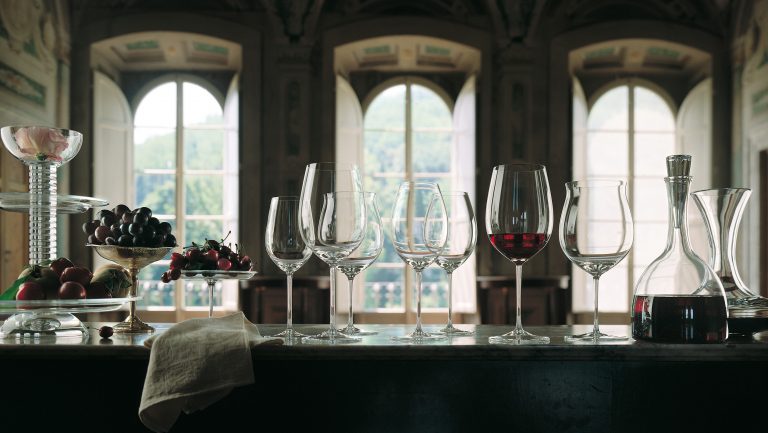
Understanding the Sensory Impact
The aroma of wine is made up of hundreds of different molecules, each with different degrees of volatility, and as the wine develops in the glass, those molecules rise and hover, and their concentration in the air above the wine changes over time. The fill level of the liquid is typically close to the widest diameter of the glass, which means that the wine spreads out and that contact between the wine and the air is maximized—more so when you swirl the wine in the glass. Aromatic molecules evaporate from the wine’s surface, and the glass’s constricted opening retains them in the headspace, the portion of the glass above the wine.
Greg Hirson, a wine chemist who wrote his thesis at the University of California at Davis on the sensory impact of wineglass shape, studied the evolution of aroma in the glass in depth using five different-shaped glasses. The parameter that seems to have the most obvious effect on aroma development is the ratio between the maximum diameter of a wine glass and the diameter of its opening. “Immediately on pouring,” Hirson says, “there was no real difference between the concentrations of the volatiles” from one glass to another. But after waiting 5 or 10 minutes for the evaporation to develop, his gas chromatograph analysis of the headspace found that “there were very small changes in the intensities of flavor components based on glass shape.”
According to Maximilian Riedel, “The impact of empirically small changes to glassware’s shape or size can be dramatic to the wine drinker’s senses. Our goal is to be as precise as possible in varietal specificity.”
Although Riedel can cite general rules of thumb—a wider opening deemphasizes overpowering aromas; a narrower opening concentrates subtler ones—he explains that the development of a new wine-specific glass is a process of trial and error. “There is no strict calculus,” he says. “I gather vintners and experts with a great depth of experience in the varietal for which we are creating a new shape.” The team agrees on which characteristics of the wine they would like enhanced and which diminished. “Together,” Riedel says, “we go through several rounds of tasting and retasting in existing Riedel glass shapes. We build up a vocabulary of cause and effect … how the wine’s aroma, flavor, body, or finish is enhanced or diminished with each [shape] difference.”
Making the Case for a Universal Glass Shape
The Gabriel-Glas universal glass is also designed to enhance and not merely hold wine. Like the similarly shaped Zalto universal glass, its bowl has a shallow, cone-shaped bottom, which means that a smaller pour of wine can spread to the maximum diameter of the glass—the designer René Gabriel calls this feature bouquet drive. It then tapers inward toward a narrow opening, the size of which, Gabriel says, is intended to match that of a rose: “A rose doesn’t smell when it’s too open.” And the concave curve of the taper, he claims, allows heavier and lighter volatile aromas to combine in a way that a bowl with convex sides doesn’t.
When Jancis Robinson set out to create her own wineglass design, her considerations were different. “I started with the aim of producing one glass for all wines,” she says, “regardless of varietal, color, strength, and fizziness.” Based on her decades of tasting experience, she had a shape in mind even before beginning the design—“a generous, wide-bottomed tulip shape.” After experimenting with her design partner, Richard Brendon, she says she was “delighted to confirm how effective [her] suggested bowl shape was for both aroma and palate impact.”
Unlike some universal-glass users, Robinson is not a glass-shape skeptic. She’s found that a Riedel glass whose shape is matched to a wine is “usually a small percentage better.” But, she says, “life is just too short to have … lots of slightly different but similar glasses.”
For those who do enjoy a multiplicity of glasses, the options continue to multiply. One of the newest Riedel products is a line of glasses called Performance, which have tiny ridges covering the interior surface of the bowl that may or may not influence the flavor of the wine by slightly increasing the surface area where it contacts the air.
“At home, I stick to one kind of glass,” Eleven Madison Park’s Rastello says. “But I feel one of the reasons for going out is to have something you don’t have at home.”
For Greg Hirson, the effect of the glass, though detectable, is a fractional part of the wine-drinking experience. “Atmospheric pressure, mood, health, company, lighting, sound, wineglass shape, temperature, focus, and an infinity of other factors will change how the wine is perceived,” he says. “My initial reason to study this was to see if there was a scientific basis for having the ‘correct’ wineglass. I don’t think there is.”

Dispatch
Sign up for our award-winning newsletter
Don’t miss the latest drinks industry news and insights—delivered to your inbox every week.
Paul Adams is the senior science research editor at Cook’s Illustrated. He lives in New York City, where he writes about food and drinks.

